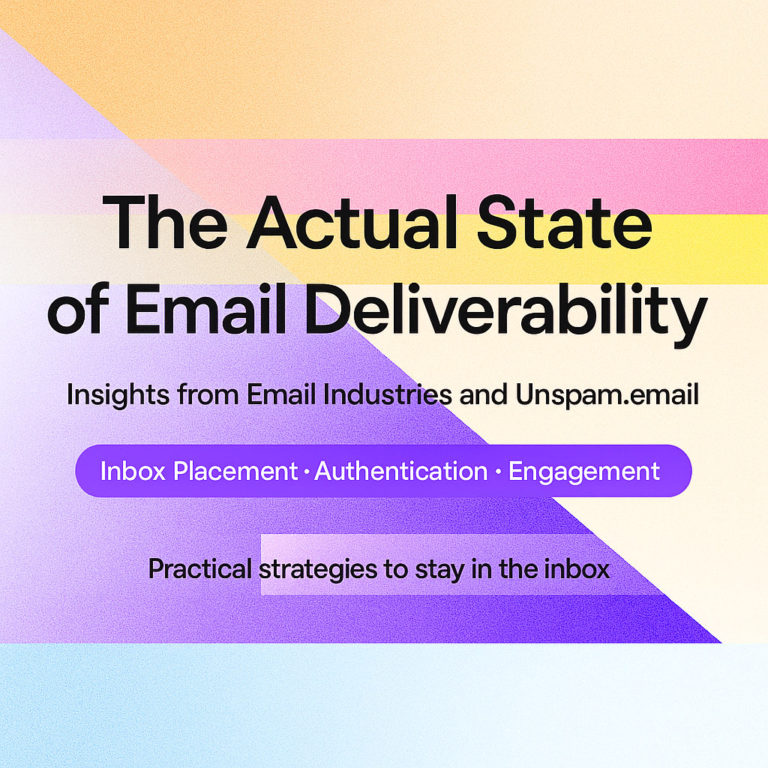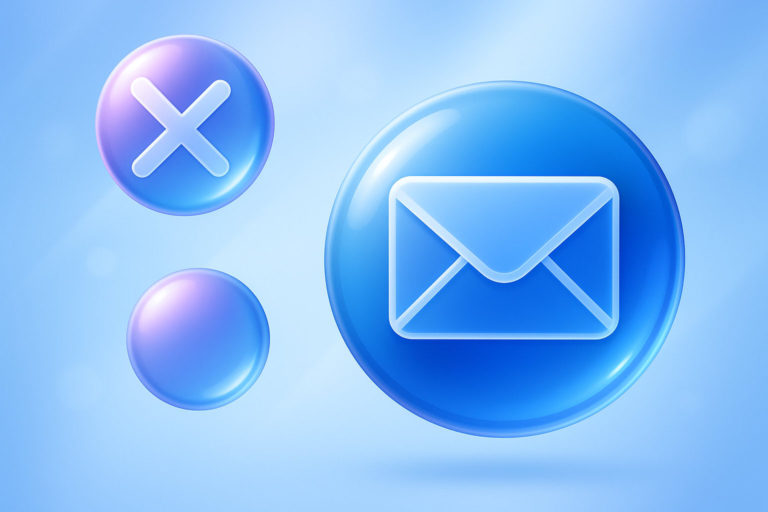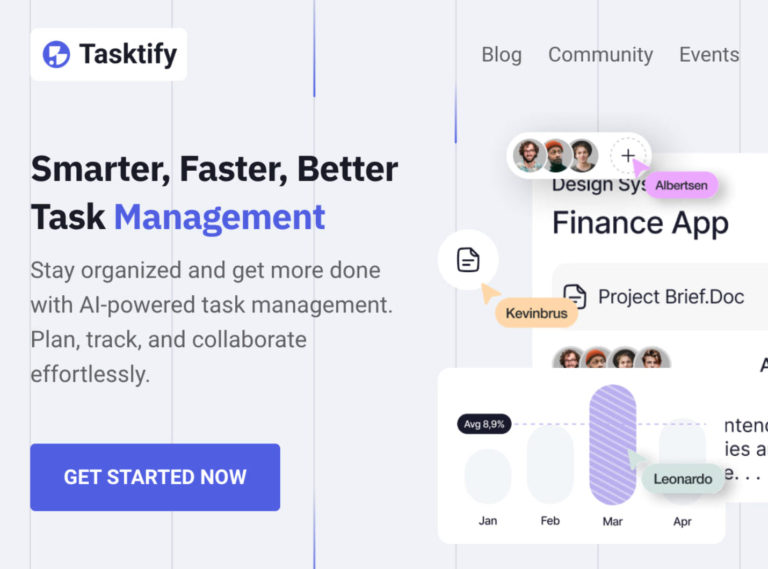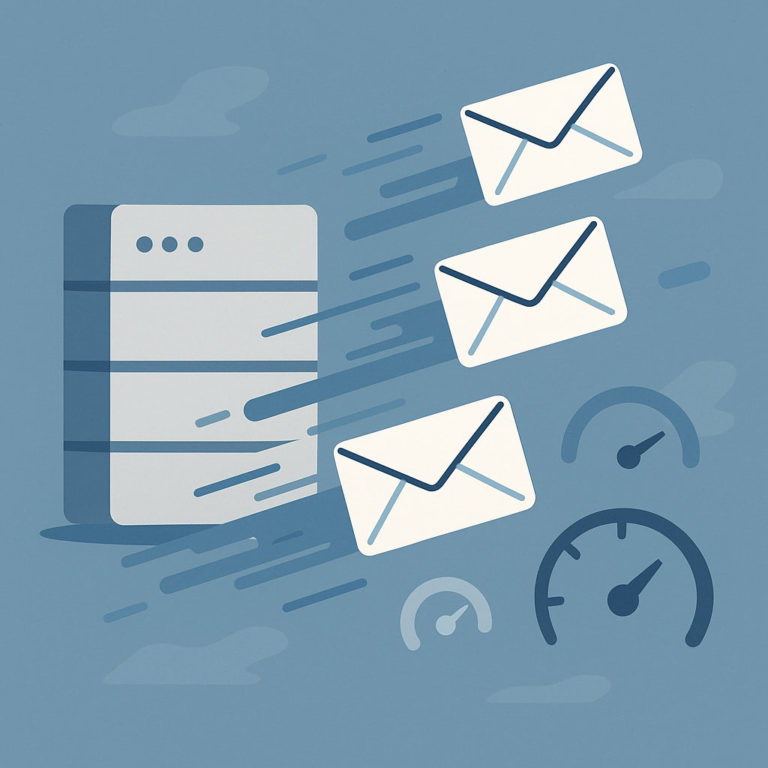Did you know that over 90% of marketers stated that content is a highly important business asset? It underlies a company’s activities across channels and interaction points, from communication to brand presentations. Whether in the B2B or B2C sector, whether a young or well-established organization, it comes off as their highest-quality source of engagement, traffic, conversions, and leads.
When it comes to the email channel, it plays a crucial role in achieving multiple goals. It might educate, inform, promote, and entertain. It is the cornerstone of every email campaign. However, if it is not properly optimized, you cannot expect it to be this high-quality asset.
Companies must introduce email content optimization strategies in their routine to ensure this aspect of their communication with clients performs its purpose well. Why is it important? What are those strategies? What tools do you need for that? We are going to talk about this in this article.
What Is Email Content?
Email content is an umbrella term encompassing the different data types you send to your recipients in a digital newsletter. It could be text, digits, graphics, visuals, and dynamic elements. It could also be formatted, styled, presented in rich-media format, generated, and even hidden from the reader’s eyes, yet available to mailbox providers through meta tags or alt tags for screen readers.
Email content lies at the core of communication with subscribers in the email channel. It is the foundation of the email campaign and marketing strategy, crucial in creating a consistent, branded omnichannel company’s presence in the market and achieving prime marketing goals.
Different criteria could categorize it. For instance, if you consider the amount of text as a benchmark, it could be short, medium-sized, or long.
Types of Email Content
The most common and popular types of email content are the following.
Plain text. It is the most popular type. It is readable, usually unformatted material represented by pure characters such as letters, digits, and punctuation. It does not include graphics, icons, logos, links, or interactive elements.
Graphics. It is a loose term for visual data. It could be images, photos, illustrations, drawings, logos, icons, pictograms, watercolors, and other forms of two-dimensional and three-dimensional pictorial representation.
Image. This is the most popular subtype of graphics. It might depict anything: a concept, phrase, action, or even marketing appeal. It comes in numerous dimensions and formats to accomplish various tasks, such as supporting the message, adding visual interest, capturing attention, etc.
Links. A hyperlink is a clickable element of email content that takes subscribers away from the email to another location online. It could be plain text or any graphical material. It could be presented textually (like a simple word or phrase) or graphically (like a solid rectangle-shaped call-to-action button).
Video. Although most email clients still do not fully support videos, this type of email content has a promising future as it can increase click rates by 300%. It is gaining momentum and becoming popular among marketers and customers.
Animations. It is a technique that manipulates images to reproduce motion. It comes in all shapes and sizes, from traditional motion graphics to ultra-modern 3D visualization. However, in the context of email content, it is usually quite primitive and delivered in dynamic gif format to not overload the digital newsletter or look suspicious to ISPs.
Attachments. They are digital files sent along with emails. Although they are an addition, they are still part of the email content as they supplement the message and idea behind the communication. These could be documents, PDFs, guides, infographics, images, forms, and even controversial files like videos and audio that might trigger spam filters.
Games and interactive elements. Gamified user experience and interactive details are modern types of email content growing in popularity. They are usually seen in email campaigns dedicated to special events. They are rare guests as they are still largely unsupported, but subscribers adore them for being engaging, inspiring, and impressive.
Audio. This is the most controversial type of email content. It is uncommon, but we could not help to mention it as it has great potential. Not only could it reinforce the overall impression and produce a one-of-a-kind user experience, but it may greatly improve email accessibility. For instance, it could deliver information to visually impaired subscribers by playing it. However, this type of email content is widely unsupported. To make matters worse, many mailbox providers and ISPs consider it spam or malicious activity. So, for now, using it in your digital newsletter is not recommended.
The good news is that mailbox providers are becoming more complex and sophisticated, extending their support for various HTML features and data formats. So, audio and video might one day get the green light, giving companies a golden opportunity to take email campaigns to the next level and improve accessibility.
However, for the time being, the email marketing team may include in their digital newsletters these functional blocks:
- Pure text,
- Images, illustrations, icons,
- Animations,
- Dynamic effects,
- Infographics,
- Memes,
- Product reviews,
- Emojis,
- Guides,
- User Generated Content,
- Lists,
- Photo galleries,
- Client testimonials,
- Q&A,
- Interview,
- Quiz,
- Test,
- Forms,
- Quotes,
- FAQS,
- Polls.
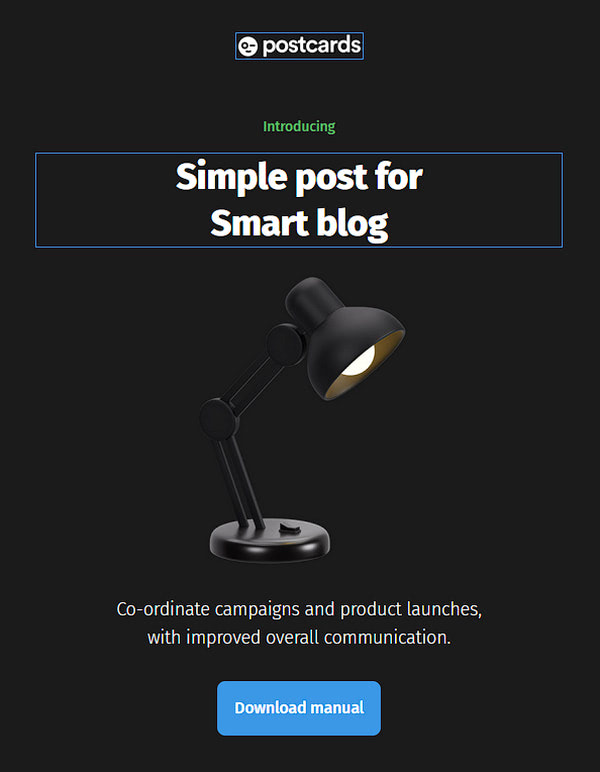
Different types of email content
Types of Email Content Formats
The email content is increasingly diverse. From plain text to games, it might take different forms depending on the goal and purpose of email communication. Lying at the core of the email campaign and strategy, it is presented in different formats. The most popular are:
Informative email content. It includes enlightening, educational, or clarifying data about a certain topic. It is meaningful and valuable. It could be short or long, use a formal or casual tone, or be related to internal or external topics. As a rule, it features news, updates, tips, resources, or data related to the industry to improve understanding, eliminate confusion, engage the audience, and stimulate thinking.
Promotional email content. It is on the other end of the spectrum. Its ultimate aim is to encourage action that, as a rule, drives sales and revenue for a business. Centered around an incentive, it gets the word out about special offers, sales, limited-time deals, discounts, rewards or bonus programs, or exclusive content.
Transactional email content. It is an automated and, most of the time, generated type of email content sent to company recipients. It is triggered by subscriber actions or inactivity. It could feature a welcome message, onboarding guide, account notification, order confirmation, receipt, shipping information, or any other important data about a commercial transaction or a user’s interaction with the business.
Behavioral email content. It is closely related to transactional email content, as it is also generated and could be automated. However, at its core, it uses thorough analyses of customers’ behavior on the website and email channel, purchasing history, and preferences to create highly personalized and targeted messages. It might include product recommendations, customer reviews, cross-sell and upsell blocks, educational information, and promotional data.
The re-engagement email content. It is generally a combination of informative and promotional content aimed at drawing the attention of inactive or lapsed customers and re-engaging them with the company’s communication. It includes incentives and information that deliver value to subscribers and give them a solid reason to reconnect and return.
Holiday email content. It can be informative and promotional, yet it is always centered around a particular event (holiday, anniversary, milestone). It always features greetings, themed content, incentives, games, and interactive elements to capitalize on seasonal trends and engage customers.
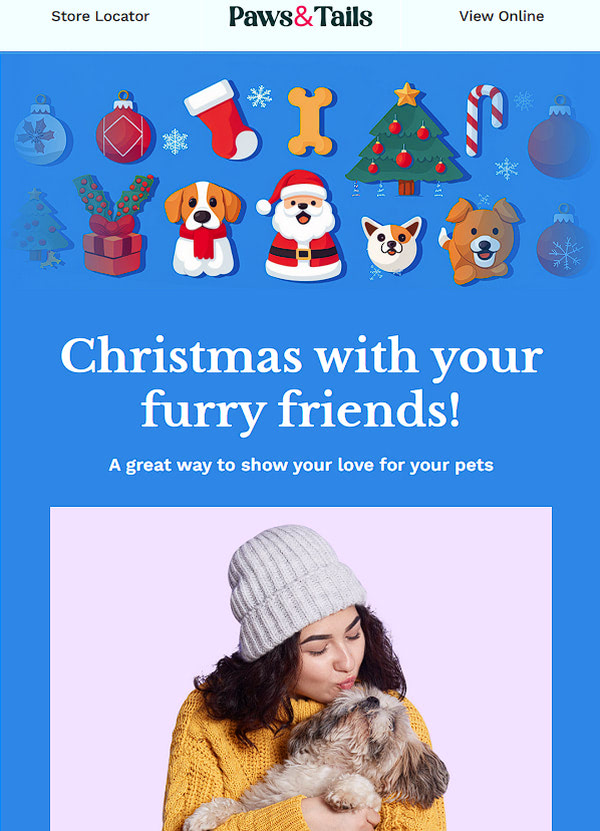
What Is an Email Content Optimization Strategy?
Email content optimization is a deliberate process that performs several tasks crucial for successful outreach. First, it eliminates all mistakes and inconsistencies in the message and user experience.
Second, it ensures the message hits the right chord with the target audience and delivers true value by meeting their current needs and expectations.
Third, it enhances the message’s performance by increasing positive metrics (click-through rate or reading time) and decreasing negative ones (spam complaints or unsubscribes).
Finally, it unlocks the potential of email marketing to derive substantial benefits for the company.
Generally, this process implies analyzing, improving, and further tracking key aspects of the digital newsletter, such as the subject line and body content, including headlines, links, images, call-to-action buttons, offers, and even design, layout, information hierarchy, and readability. It also involves checking every critical criterion against best practices and doing A/B tests to define what works best for the company and its target audience.
To nail this process, companies devise email content optimization strategies. These action plans combine tactics and efforts to polish email content and reinforce email marketing campaigns. They help the company deliver the right message to the right crowd at the right time.
Every strategy is a roadmap that describes the planning and execution of actions in time. It provides a framework and structure crucial for team members to make relevant data-driven decisions, collaborate effectively on every project, and achieve the best results.
Importance of Adopting Email Content Optimization Strategies
The most important reason for devising and adopting email content optimization strategies lies in the recent adaptation of AI summaries by Apple, Gmail, and Yahoo. Briefly, last year, the three biggest and most popular mailbox providers announced their intention to transform user experiences in their platforms to help their clients stay on top of their communications. For this, they released the so-called AI summary feature. Its goal is to help users handle their daily parade of emails by sifting through email content and generating a short yet detailed outline.
This means that the fate of your email campaign to subscribers using this feature solely depends on how well your content is optimized. One mistake or inconsistency that distorts the AI-generated summary will leave your email unread and even unopened, nullifying all your efforts. If this reason is not enough, there are some other good arguments.
Providing a detailed roadmap to achieving goals for every outreach, email content optimization strategy is hugely important for businesses of various scales across niches. Not only does it help to channel the efforts in the right direction and move towards the ultimate goal, but it also aligns organizational resources, identifies opportunities for improvement, and mitigates risks, thereby increasing revenue and ensuring the company’s growth in the market.
The main benefits of devising and following an email content optimization strategy for your next campaign in the channel are the following.
Improve Engagement
A company’s first benefit from adopting email content optimization strategies in its marketing routine is improving overall engagement with the message and brand.
By polishing every detail of the message, including offers that incentivize recipients and links that provide them with an easy way to follow the lead, companies strike the right chord with the crowd, deliver true value, and provide the best user experience, which stands behind customers’ satisfaction with the communication and brand.
Digital newsletters that resonate with the subscribers by meeting their needs are more likely to drive engagement and leave a favorable, long-lasting impression.
Increase Conversions and Drive Sales
Another obvious advantage of email content optimization strategies is increasing conversions and driving sales. Several critical factors contribute to this.
First, by eliminating all mistakes and confusion from the message, the company gets a professional look. It gains a reputation for producing high-quality products, which gives consumers confidence in their purchases and relationships with the brand.
Second, by making the message look consistent across devices, companies grab every opportunity for conversions. Whether their recipients check their emails on the go or at home, they are given all the instruments to follow the lead and enjoy their offer.
Third, by delivering true value at the right time, the company meets the high expectations of the target audience. This drives engagement, improves trust, increases loyalty, and, most importantly, underlies the foundation for strong and sustainable relationships crucial for repeat purchases.
Save Investments
Saving your investment and ensuring the project’s cost-effectiveness are among the top reasons companies should adopt email content optimization strategies. As the procedure that requires companies to check every tiny detail of the message, it surfaces possible mistakes, faux pas, and inconsistencies that may cost a lot when delivered to the crowd.
By fixing them in time, the company avoids future monetary losses. It also increases the chances of the whole campaign performing well. Ultimately, your efforts, time, money, and resources will not be in vain.
Outperform Competition
Outperforming competition is one of the biggest advantages of adopting an email content optimization strategy. By tracking and analyzing email content performance with every outreach, companies gain necessary knowledge about what elements in the message, particularly body copy, perform the best.
In addition, they may understand what product, offer, or incentive works best for a certain market segment and gain insights on how to position them correctly in the reading flow to grab attention and encourage action.
Polishing these tiny yet critical details of communicating a message helps the company win over the recipients and stand out from the competition with its thorough approach to the audience.
Ensure Clarity of the Brand’s Identity
With so many different types of email campaigns and messages involved in email marketing, it is easy to get off the beaten track and lose your brand’s personality in email communication. Many companies overlook brand consistency when striving to unlock the true potential of the email channel’s direct outreach. They focus on meeting the target audience’s needs and forget about staying true to themselves, losing authenticity in the communication. This might cause many problems, from ruining a reputation to scaring away even loyal fans.
Only with deliberate email content optimization strategies that uncover inconsistencies can they ensure that the way they present their company to the crowd remains the same with every outreach. This helps them create a unified image and maintain communication aligned with their values, mission, and personality. Companies ensure clarity in the brand’s presentation and eliminate confusion, crucial for establishing trust, increasing loyalty, and building authority in the niche.
Better Understanding of Target Audience’s Profiles
Email content optimization is a multi-step process that implies companies not only locate and fix issues in the body copy but also track and analyze its performance. This enduring monitoring provides companies with relevant and, most importantly, critical information about the target audience’s current needs, demands, and expectations.
By tracking the performance of subject lines, links, and offers, companies may determine changes in preferences and behavior patterns, thereby better understanding what customers need in communication. This information is also useful for effectively anticipating future trends to stay ahead.
This benefit is not evident at first glance and becomes obvious only over time. Nevertheless, it provides crucial information for wholly grained segmentation and hyper-personalization, which improve the company’s presence in the channel and reinforce its position in the market.
Popular Email Content Optimization Strategies
Determine the Right Audience for Your Message
Do you know that almost 70% of customers expect a personalized experience in their communication and interaction with brands? Loyal clients expect their brands to treat them with valuable, meaningful, thoughtful, authentic, and individualized content. They expect to receive offers and information that meet their desires, needs, preferences, and pain points.
However, how can you achieve that if you do not know whom you are catering to? Understanding your audience is one of the most important steps in email content optimization, as it helps you speak directly to subscribers through the right message.
A thorough analysis of demographics, psychographics, behavior, occupation, lifestyles, motivation, and stage in the buying cycle gives the company the power to test, learn, and develop the best email content for individuals. It provides the necessary knowledge to make the right decisions about every detail, including:
- Subject line,
- Preheader,
- Greeting,
- Offer,
- Information,
- Visual material,
- Dynamic elements,
- Navigation,
- Layout,
- Formatting and style,
- Brand identity.
To determine the right market segment for email content, follow these recommendations:
Analyze your current loyal customers. Collect their demographics and behavioral trends across various interaction points. Go beyond the email channel and track your clients’ activity on a website, social media, or application to gather important data such as purchase history, browsing behavior, pain points, demands, and other relevant data points.
If you can perform customer interviews or collect first-hand data through polls or quizzes, do not hesitate to do that. Ask not only about feedback or reviews of the product or customer support but also about their interests, goals, or lifestyle preferences. Use interactive details and AMP to conduct this in the email channel.
Use professional instruments to track customer engagements and determine purchase trends. Perform market and competition research to gain more insights into your target audience.
Do a thorough segmentation. The good news is that many professional instruments allow companies to create secluded market segments that share the same value or have common characteristics and behavior patterns. So, you can segment your subscription list thoroughly, whether small or big.
Finally, take every market segment and personalize your email content according to their specificities. For instance, you may insert additional text into alt tags to deliver the message for those who use screen readers or make content mobile-friendly to cater to those who prefer surfing through their mailboxes via cell phones.
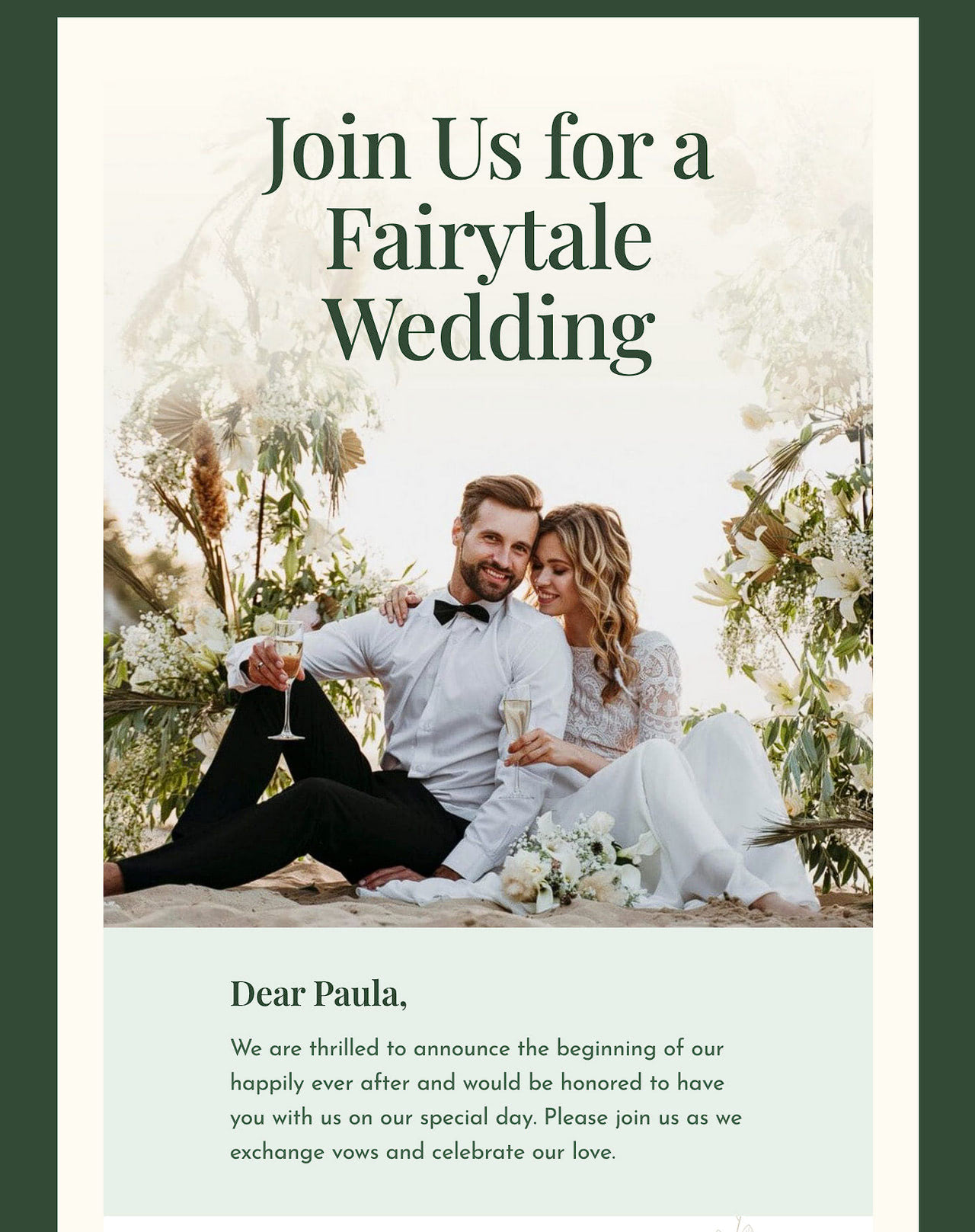
Set the Goal for the Message
With many digital newsletters delivered to your recipient daily, your email content strategy needs a solid compass to cut through the noise, reach its destination successfully, and achieve the desired effect. It is crucial to enhance your email content optimization journey with smart goals.
Goal setting helps a company navigate the vast sea of ideas around content creation, set a clear direction for team efforts, surface areas of improvements, and fix issues on time, making email campaigns unified, consistent, and effective.
As email campaigns come in all shapes and sizes, objectives could be anything. For instance,
- informing about updates,
- welcoming newcomers,
- establishing a warm and friendly atmosphere,
- showing empathy,
- congratulating on an anniversary,
- notifying subscribers about shipping information,
- reminding customers about abandoned carts.
They could also be marketing-oriented, like
- enhancing engagement,
- reinforcing relationships,
- generating traffic to the website or social media account,
- or increasing downloads.
Setting objectives for email content optimization strategies starts with answering several important questions:
- How will these goals help your business to grow?
- How will these goals add value to your communication?
- Will these goals be aligned with brand values, mission, vision, and personality?
Goals must help the company to produce high-quality content that adds value to the desired outcomes. Here are several tips to follow:
- Identify specific objectives for email content. They should be realistic within reasonable deadlines.
- Determine the key metrics to gauge the success of your goals for email content.
- Measure progress against your objectives to assess efficacy. Consider factors such as reading time, conversions, click-through rate, open rates, spam complaints, and unsubscribes.
- Ensure goals are relevant to the overall content marketing strategy. Check whether they are relevant and contribute to the company’s main efforts.
Select the Topic
Choosing the right topic is the cornerstone of every email content optimization strategy. However, it can be a true challenge, as you never know what people want to read about.
In email marketing, selecting the topic largely depends on the type of campaign and communication. For instance, if it is a transactional newsletter, the topic should be centered around the information you must deliver based on certain user actions. In contrast, informative emails allow you to write about whatever you want.
Here are some tips to nail this task:
- Identify the target audience’s segment.
- Check trends.
- Analyze your competitors.
- Brainstorm ideas. You might come up with something unique or go for an oldie-but-goodie approach to addressing common questions or issues your audience faces.
- Use keyword tools. As a rule, topics tied to them are more relevant, tangible, and interesting.
- Consider the potential impact of your chosen topic on reader engagement. It should not only produce a great impression but also contribute to a steady relationship with your readers.
- Monitor the effectiveness.
Lastly, it would help to ask your audience directly what they want to read. You may send digital newsletters with polls and surveys to determine which areas they are currently interested in.
Choose the Right Format
Email content comes in many formats. It could be a short message, long message, success story, case study, recommendations, feedback, report, infographic, product guide, gated content, etc. Copywriters are not restricted to just one format. They may combine several types inside one newsletter to achieve better response rates.
Choosing the right format is a part of optimization strategy because different types of content help companies reach different audiences. Companies should optimize the format to deliver a message effectively to a chosen market segment.
Ensure Headlines Are Compelling
Do you know subscribers tend to scan digital newsletters rather than read them? Receiving a staggering amount of emails daily, your clients do not have time to read every correspondence word by word. As a rule, they focus on the first and last paragraph, postscript, images, and headlines.
A good headline is arguably the most important part of any piece of content. It naturally grabs attention and instantly delivers the key message behind the communication, creating an immediate and lasting impression of the story and brand.
Therefore, it is important to optimize it. It must be compelling, informative, and meaningful, convincing people to keep reading. It should capture attention and stand out from the sea of the content.
Here are some tips shared by Forbes Communications Council members you can follow to improve it:
- Use emotive language.
- Refine the headline for every email and market segment.
- Write a headline in several ways and choose the one that sparks curiosity the most.
- Make it short, clear, succinct, and impossible to miss.
- Avoid hyperboles, exaggerations, and bait-and-switch.
- Base your headlines around rationales or numbers.
On the technical side, ensure your headlines have the right HTML tags and appropriate formatting and style. Pay attention to the choice of typography, as it might reinforce or, on the contrary, ruin the impact by adding its tone.
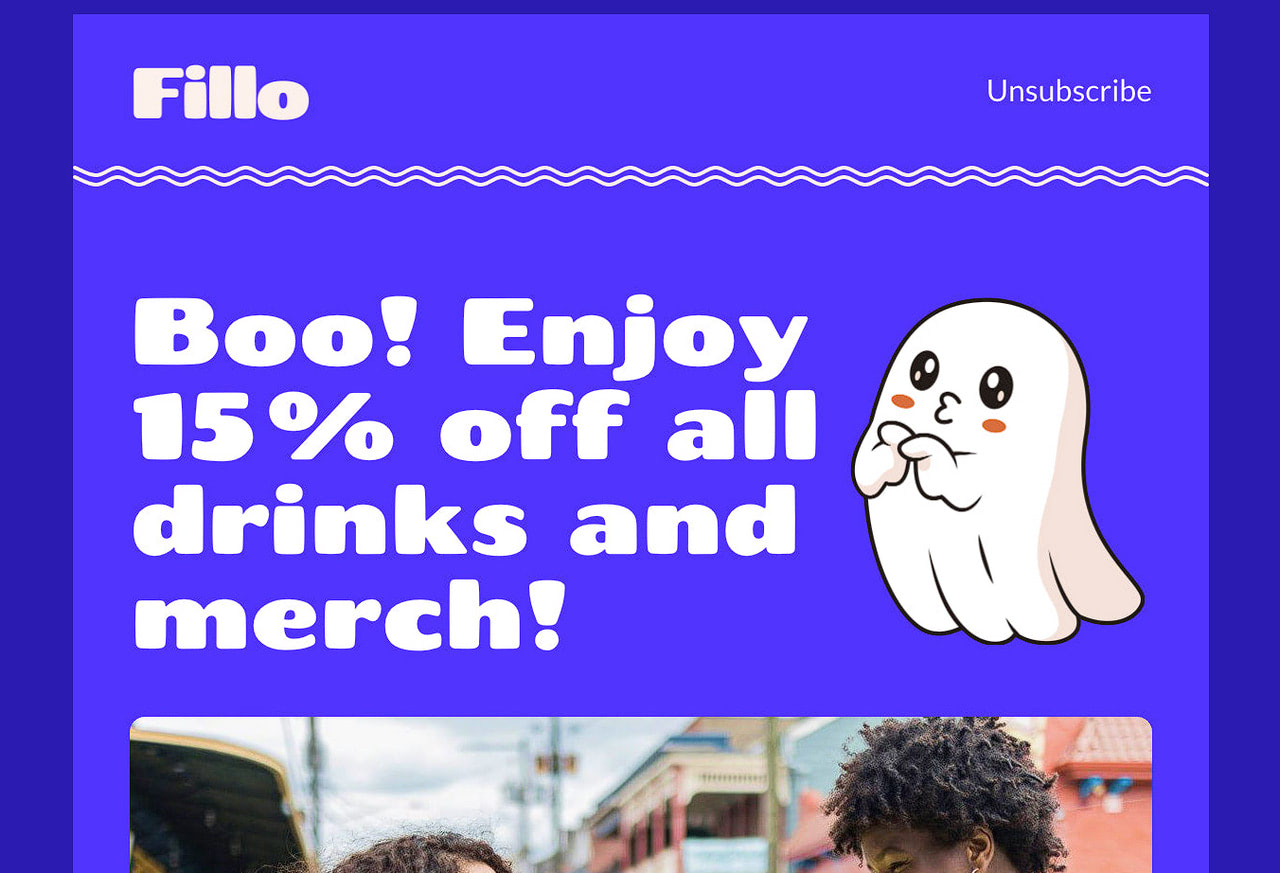
Set the Right Tone, Voice, and Atmosphere
Email marketing lacks the direct human contact that customers usually have in-store. So, companies cannot benefit from body language or tone of voice, which is crucial in generating sales and building warm and friendly customer relationships. However, the email channel has a written tone and voice that help establish the right atmosphere for their subscribers.
Every word you select, and every style you use drastically influences the context, understanding of the message, and correct interpretation. If you do not pay attention to this, your message can easily go wrong. Therefore, optimizing your tone, voice, and general atmosphere is important.
Here are the best practices that you should follow to ensure the right email’s tone and ambiance:
- Use non-judgmental and non-discriminatory language with polite and positive words.
- Do not be too pushy with action words.
- Use emojis in informal emails.
- Use slang only if appropriate for brand identity and the target audience.
- Avoid capitalized words.
- Select a suitable salutation.
- Focus on the start of your email (particularly the first paragraph). As a rule, it sets the tone for the entire newsletter and must be precise and clear.
Last but not least, proofread your email content. Not only will it surface possible grammar mistakes or inconsistencies, but it will also help determine the tone. Rule of thumb: leave your email content aside for several hours or a day, then return and read it out loud. Hearing the content helps you accurately define its tone and atmosphere. Asking a colleague to read it would also help.
Use Images Thoughtfully
Visual material is an integral part of email content. Images, illustrations, photos, icons, and tiny pictograms populate almost every digital newsletter. Not only do they adorn the experience, but they also serve as visual cues that help readers navigate through the content and get critical information quickly.
Like a website, visual material performs various tasks to help companies achieve their marketing goals efficiently. For instance, it might support the message, create a comfortable user experience, and make a long-lasting impression.
However, unlike websites where companies are spoilt with choice, email channels have limitations. For instance, large and heavy banners may not only slow down an email but, most importantly, trigger spam filters, giving ISPs a reason to shut down correspondence and decreasing the sender’s score and reputation. Poorly optimized images may easily destroy an email campaign. Therefore, perfecting visual material is one of the most critical email content optimization strategies. Here are the best practices to follow.
Dimension
Stick to the recommended sizes for different types of visual material in email. They are the following:
- Hero image should be from 600px to 900px.
- The banner should be from 600px to 900px.
- Logos should be from 64px to 100px.
- Icons should be from 32px to 100px.
Note that the image size in content blocks or columns might be 150px to 900px, depending on its role and text intensity.
Size
Ideally, the lower the image size, the better. Mailbox providers seriously consider the weight of digital correspondence. If your email is too heavy, you risk triggering a spam filter or, even worse, being rejected by an ISP immediately. Therefore, ensuring your images do not overload the email by compromising its loading time is crucial. The rule of thumb is to keep your image weight under 500KB.
Therefore, ensure that all visual material is well-optimized and is under the recommended size.
Format
The good news is that you may use popular formats in digital newsletters: JPEG, PNG, and GIF. However, it is still highly recommended that the chosen format is appropriate to the image’s role and purpose. Here are the common recommendations:
Use JPEG for photos and detailed images as it maintains the quality of the scene even when optimized.
Use PNG for logos and images with transparent backgrounds.
Use GIFs for animations or add tiny interactive details.
Use SVG for visual material that should scale gracefully without compromising quality. Note its support across mailbox providers is still mixed, with Outlook notoriously failing to display it correctly.
Alt
It is a common misconception that every image and graphical element in a digital newsletter should have alt descriptions. Only those items that contain unique information should have alt text. If you use visual material to enhance user experience or repeat something already featured in the text, you should omit alt to avoid redundancy.
Mobile-Friendliness and Responsiveness
When it comes to small gadgets, things always get tricky. As mobile phones and tablets are limited in space, images should always be treated carefully, as they might easily intimidate readers and ruin reading and user experience. Therefore, ensuring every visual content element works properly on a small screen is integral to optimizing email content.
Among the professional recommendations are:
- Ditch images that clutter the mobile user experience.
- Maintain a balance between textual and visual information.
- Avoid image sizes that occupy the entire mobile screen.
- Ensure images scale gracefully without pixelation or distortion.
- Ensure images do not pop out horizontally.
- Ensure images are as lightweight as possible.
- Ensure text blocks and images are stacked properly without ruining the reading experience.
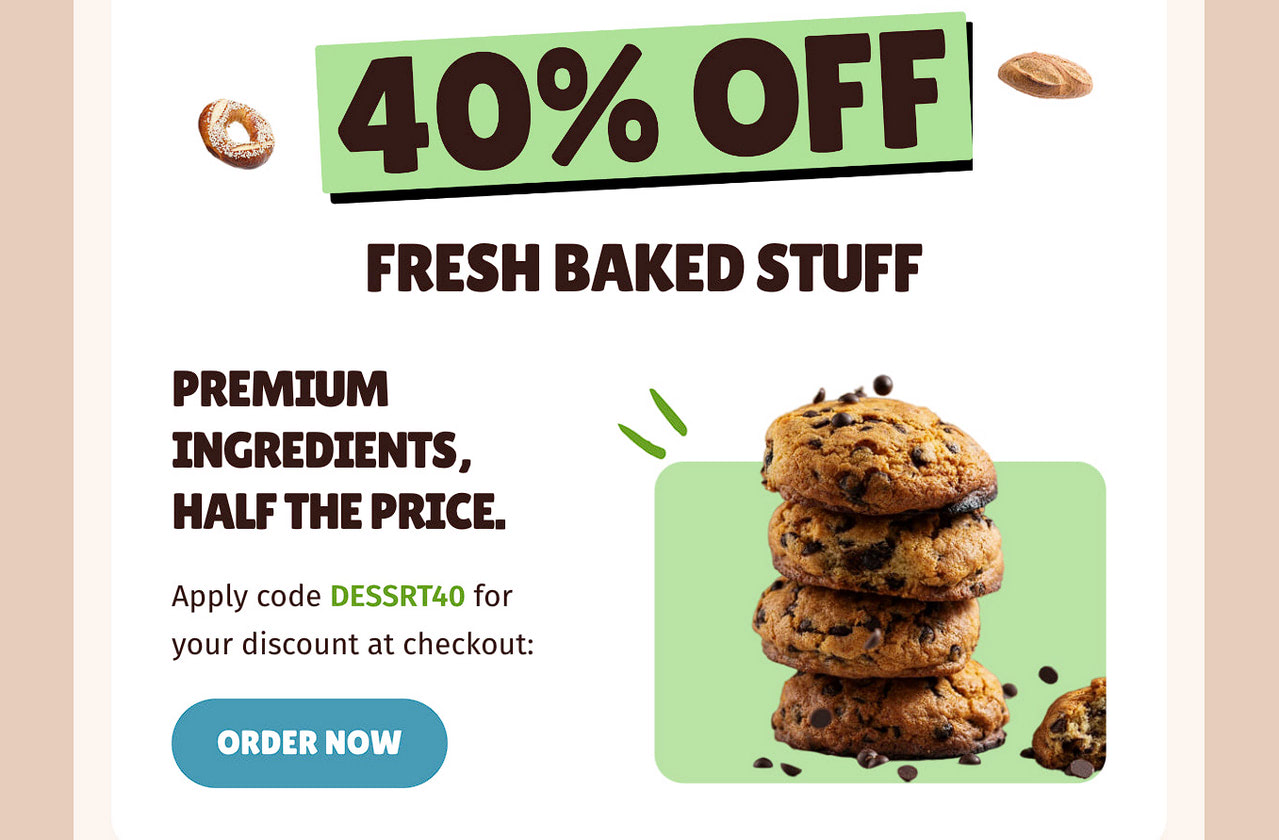
Image well-built into the layout
Use Clear and Action-Oriented CTAs
The content might be king, but the call-to-action is its loyal valet, doing all the heavy lifting to achieve marketing goals like driving traffic, boosting sales, or generating engagement. They give subscribers a clear path to the next step, enabling them to benefit from the message and feel comfortable communicating.
The best practices for optimizing call-to-action buttons in emails are:
- Ensure it has concise text and use action-oriented words with clear and non-pushy meanings.
- Ensure it has a compelling value proposition.
- Ensure it is personalized.
- Ensure it stands out from the content flow and instantly grabs attention.
- Ensure it looks and behaves consistently across screen sizes.
- Ensure it has a huge tappable area on mobile phones and tablets.
- Ensure it is placed in a prominent location. If necessary, it could be doubled to achieve a greater impact.
Last but not least, the performance of the call-to-action button must be tracked in terms of marketing effectiveness and email optimization. This provides companies with relevant knowledge about what works best for caption, position, surroundings, size, color, and style of CTA within certain email content.
Links
Optimizing links in email content is usually an overlooked step. However, as interactive elements that provide readers with getaways, they must be perfected. It is not enough to ensure they are working; placing them strategically across the reading flow is crucial to ensure your readers use them when needed.
Links should look and feel appropriate in the content. They should support the message and help readers get the most out of their interaction with the email.
The key moments to take into account are:
- Links should be as specific as possible, so avoid clichés like “click here.”
- Links should feature nouns rather than verbs.
- Links should fit the context of your content.
- Links should open in a new browser tab.
- Links should be carefully highlighted and properly styled.
Hit the Essentials: Coloring, Typography, Layout, Mobile-Friendliness and Accessibility
Let us discuss the technical side of email: coloring, typography, layout, mobile friendliness, and accessibility. Although they are not the content, they still play a fundamental role in delivering the right context.
Color
Coloring is a cornerstone of effective email. It can influence perception on a subconscious level, so it may easily distort or, on the contrary, support the message. It influences readability, user experience, accessibility, and overall impression. When played right, it reinforces brand recognition and encourages the right actions.
Therefore, when optimizing email content, it is highly advisable to consider coloring seriously. Ensure it complements your message, supports your intentions, and creates the right ambiance. It should also be in sync with your brand identity and personality.
Typography
Typography is another critical tool for displaying content. It supports optimal readability and correct interpretation. For instance, if you use an overly decorative font for a serious headline, your message will cause mixed feelings and confuse your readers, whereas neutral sans-serif will only reinforce your appeal.
Much like coloring, typography should be treated seriously. It must be aligned with the message and deliver the content correctly.
Layout
Layout lies at the core of well-optimized email. It arranges all elements of the email body copy and serves several crucial purposes. First, it creates order out of chaos, which is necessary to avoid confusion. Second, it creates a clear reading path. Third, it guides subscribers through the email and shows them what they should see in order. Finally, it assists in achieving marketing goals by featuring incentives and call-to-action buttons at strategic locations.
When optimizing the layout, ensure you hit the essentials. This means your layout should gracefully and smoothly handle all the information and present it consistently and coherently across all screen sizes. It should maintain the reading flow and non-intrusively accentuate attention to key details. Finally, it should support the fragile balance between text and images, amplifying information hierarchy.
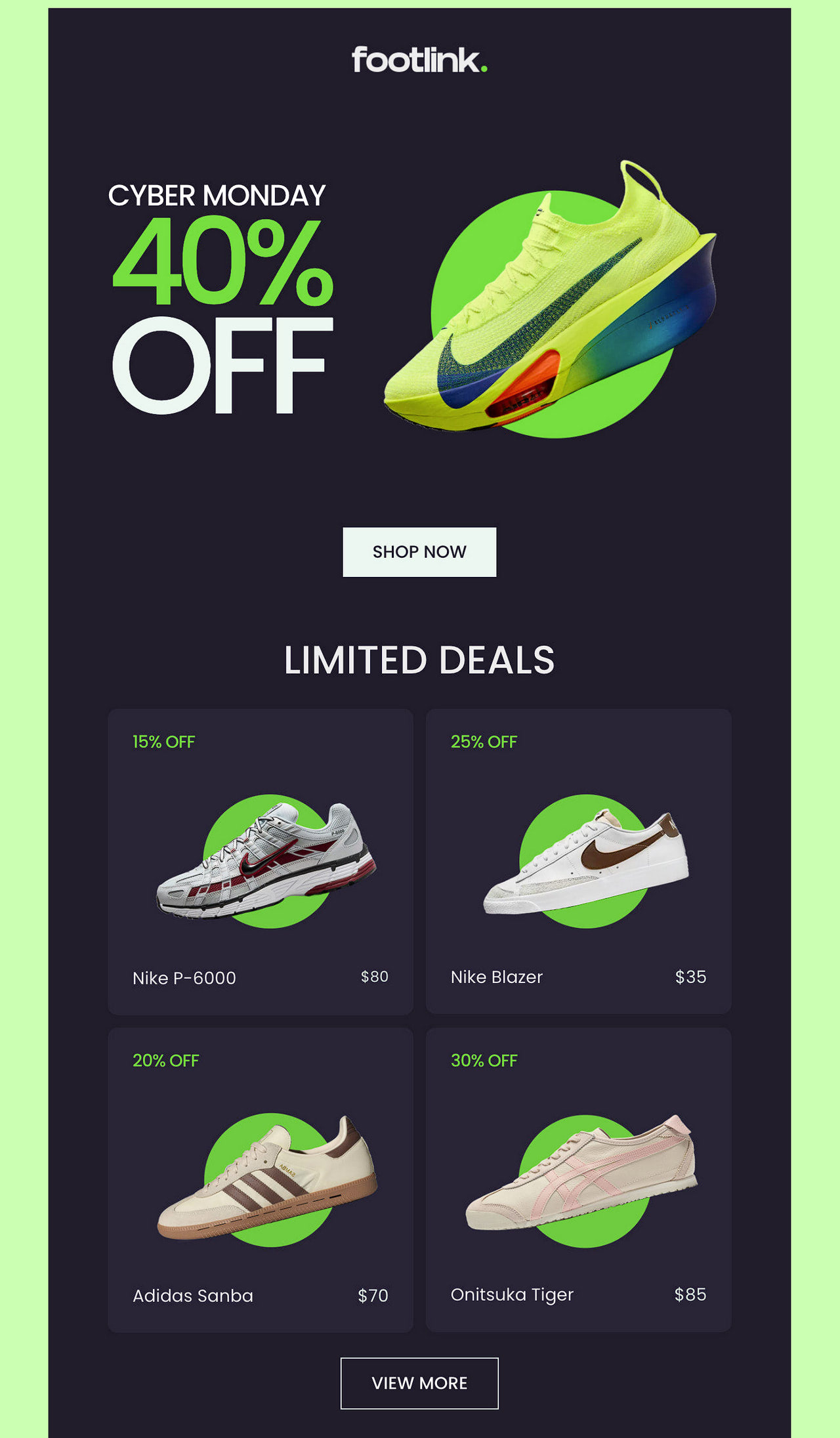
Mobile-Friendliness
Email content should be responsive and mobile-friendly. As subscribers prefer to check their mailboxes more on cell phones than desktops, email content optimized for responsiveness is crucial.
There are different approaches to creating mobile email designs. It could be a scalable, fluid, or responsive solution. This topic deserves the whole guide; therefore, we will feature only the best recommendations that are applied to every situation regardless of the approach:
- The content should occupy a single column.
- Text should be left-aligned, while banners and image-based hero areas should be centered.
- The content should have enough whitespace.
- Text areas and headlines should be in large font sizes and sharp font styles.
- Critical details like call-to-action buttons in the reading flow must be easily distinguished.
- Big images, bright backgrounds, decorations, or drastic coloring must be omitted.
Accessibility
Last but not least email content optimization strategy is to ensure accessibility of the material, both textual and visual. As a rule, the company should meet the following recommendations.
- The text is displayed through eligible typeface, preferably from sans-serif families like Arial, Calibri, or Helvetica.
- The text has a reasonable size, at least 12 px.
- The text is broken into short paragraphs.
- There is a logical structure and clear information hierarchy.
- Headlines are concise and clear.
- Links have descriptive text.
- Buttons are easily tappable.
- Images do not confuse or overwhelm viewers.
- The layout is mobile-friendly or responsive.
- Critical visual material has alt descriptions.
- Language is plain and easily understandable by a large crowd.
- The color between the text and background is optimal.
- There are no auto-playing animations or distracting animations.
- There are no all-image emails.
- Screen readers interpret the email content correctly.
Tools for Email Content Optimization Strategies
As a rule, ESPs have a bunch of instruments for perfecting email campaigns. They help companies clean up subscription lists, analyze target audiences, improve critical metrics, track outreach performance, and more. All of them are focused on the marketing side of the campaign, answering such questions as:
- What email campaign performs the best with a particular segment of an audience?
- What email design has grabbed subscriber’s attention?
- What subject line has generated the most opens?
However, what about analyzing email content in detail? Here are some specific tools that you might need.
Unspam
Unspam is one of the most popular digital platforms for analyzing email content. Initially, it is a powerful email spam checker and deliverability test tool that helps companies avoid spam filters and optimize delivery. It analyzes critical details of email content and campaigns, surfacing issues, and inconsistencies that must be eliminated to ensure the best outcome from every outreach.
Apart from analyzing the technical side of digital newsletters, such as authentication and offering heatmap predictions, it also checks email body copy against the best practices. It ensures whether you have
- An optimal text-to-image ratio.
- Readable typeface and optimal font size.
- Closed and properly nested HTML tags.
- Non-spammy words and language.
- Supported HTML tags.
- Correct links.
In addition, Unspam also inspects subject lines and accessibility, providing email marketers with relevant insights on improving these two critical aspects of an email campaign.
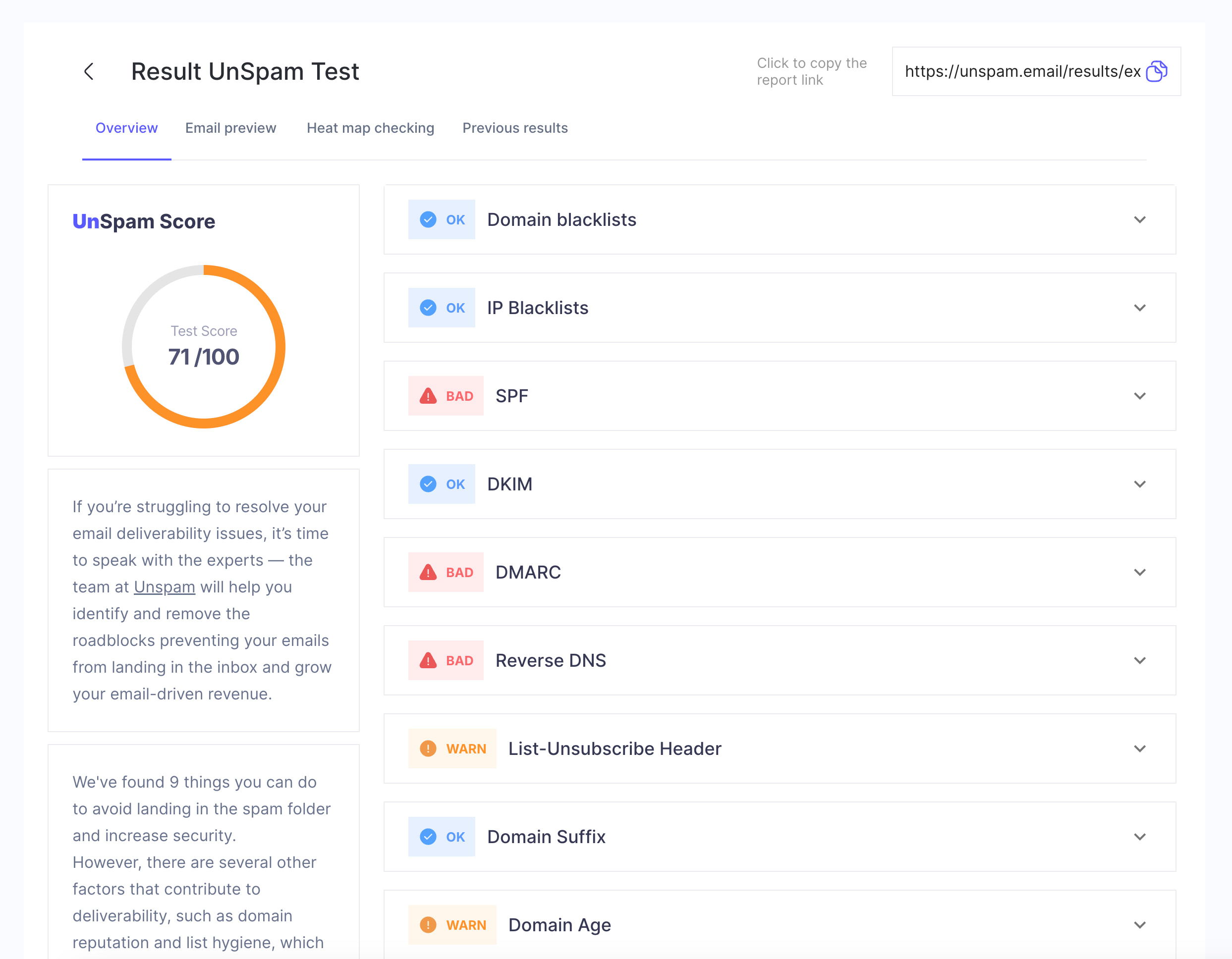
Clearscope
Another great tool to consider is Clearscope. It is the best SEO content optimization tool for producing highly relevant content. Unlike Unspam, it does not check your email content against the best practices, but it will help you produce a highly relevant message to your target audience.
The advanced AI system lies at the core of the Clearscope platform. It uses NLP models to analyze the top 30 search results and build topic models. It helps companies to define what questions to answer, how to structure the article, and how it performs against the top competitors.
Letterdrop
Letterdrop is another professional instrument for content optimization. It is a powerful content marketing platform that streamlines and perfects content creation and planning. Its advanced AI core helps companies achieve the best results with their content strategy across various channels, including email.
Among its many features, it offers ideas and new angles for improving your communication with certain market segments or determining what type and format of content users are searching for. This allows companies to make data-backed decisions about their next email campaign.
Conclusion
Email content is a cornerstone of a company’s communication in the channel. Whether in the B2B or B2C sector, as a welcome series or re-engagement campaign, it greatly benefits the company, coming as a high-quality source of engagement, traffic, conversions, and leads.
However, as with every aspect of your communication with clients, it must be perfected. Companies are highly advised to introduce email content optimization strategies into their routines to eliminate all mistakes and unlock and even maximize the potential of every digital newsletter.
From setting the right goals to creating compelling headlines to ensuring mobile-friendliness and accessibility, we have featured the best strategies any company may adopt to maximize the channel’s performance. Bear in mind that it is an ongoing process, so apart from adopting strategies, it is also crucial to follow, track, and monitor their performance to adjust them in time and ensure the best outcome.


